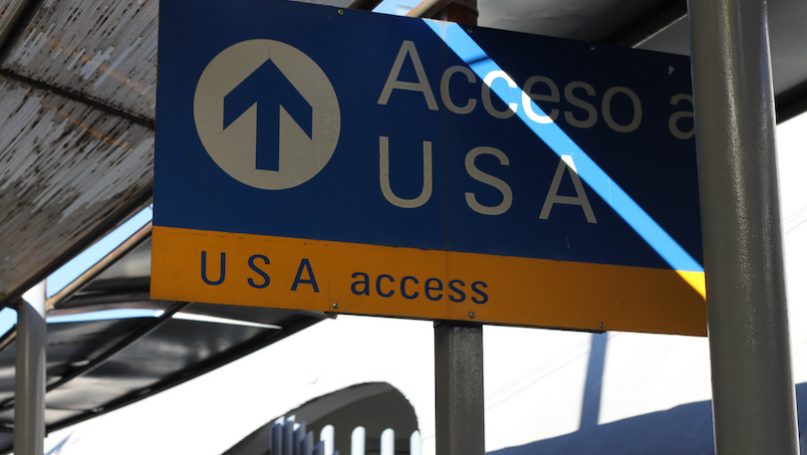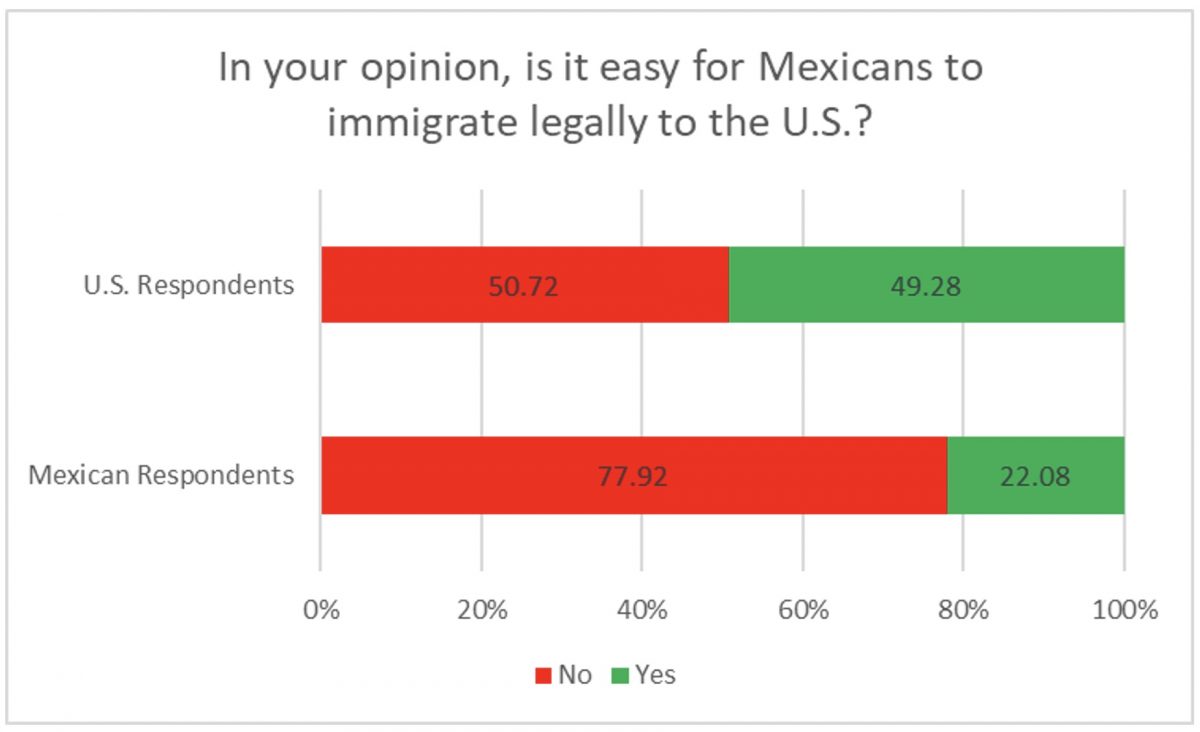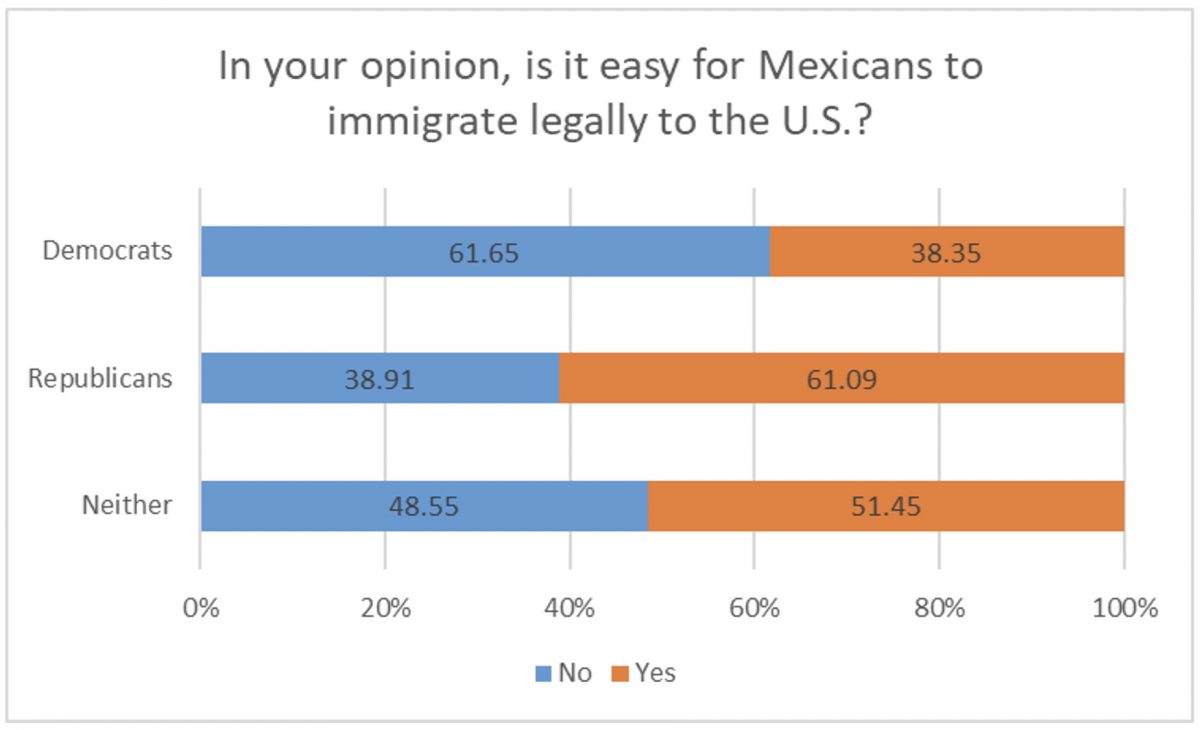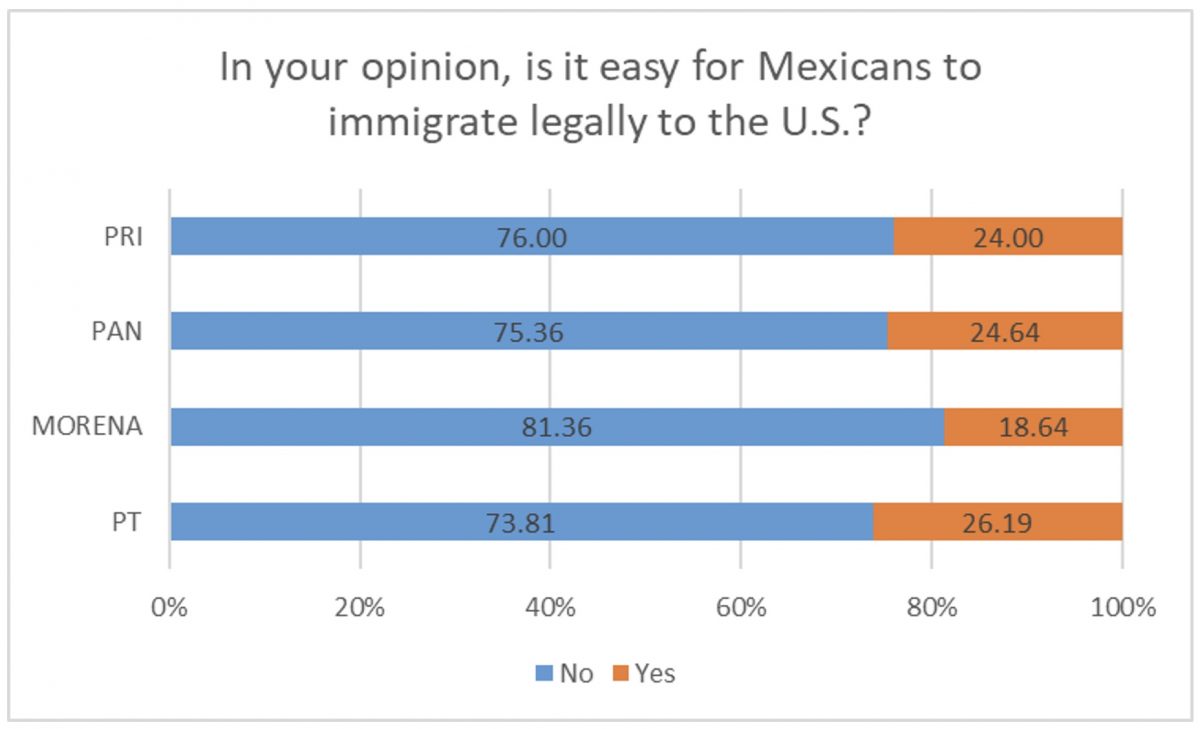
While over the past 20 years clear majorities of Americans view immigration overall as good for the country, immigration policy remains contentious, especially as the U.S. experiences an uptick in the number of immigrants crossing the U.S.-Mexico border. While the supposed ‘surge’ at the border has been attributed to seasonal changes in immigration patterns and COVID-19 related policy, the Biden administration still faces an undeniable hurdle in attempting to craft bipartisan immigration reform. The Biden administration has been criticized by both parties for an ineffective strategy at the U.S.-Mexico border, with Republicans claiming his strategy is too lenient and Democrats claiming Biden’s policy is too harsh and inhumane.
The Trump administration prioritized prosecuting undocumented immigrants and building a wall along the U.S.-Mexico border. Images of poor conditions in detention centers and children being separated from their families resulted in political uproar, particularly among Democrats. The partisan divide in attitudes towards immigrants and immigration policy continues to widen. In fact, since 2016, Republican support for deportation of the undocumented has increased by two points, while Democratic support has dropped by 10 points. While Biden has claimed he will reform immigration policy, families are still being separated. With President Biden’s promise not to separate families, some immigrants waiting in camps in Northern Mexico are sending their children unaccompanied to the border, knowing they will not be turned away. This difficult decision suggests that many Mexican citizens are unable to find a simple, legal route to immigrate to the U.S.
While many public opinion surveys focus on American perceptions of immigration, Mexican perceptions of the issue are often neglected. Although more Mexicans have left the U.S. than have come each year for the past 15 years, Mexicans still represent the largest migrant population in the U.S. Qualifying for legal status can be very difficult as immigrants must be sponsored by an employer or family member (parent, child, sibling, spouse) who has legal status or is a U.S. citizen. Employers must justify employing an immigrant by searching for U.S. citizens or Legal Permanent Residents to fill the job first. Quotas also exist, prohibiting more than a set number of people from entering the US from any one country per year, resulting in significant delays to enter the country legally. The Immigration and Nationality Act has a cap of 675,000 permanent resident visas each year, with additional immigrants allowed if they are family-based immigrants. However, this cap is insufficient to meet demand for permanent residency status, and the U.S. mandates a per-country cap where no country, including Mexico, can receive more than 7% of family-based or employment visas.
Asylum seekers on the US-Mexico border often have to wait weeks or months in brutal conditions before entering the country. Some migrants have even died from dehydration while attempting to cross the Southern border. Many migrants are desperate to escape dangerous conditions by coming to the U.S. – when legal pathways fail, many must turn to illicit routes. In 2014, of immigrants who had immediate concerns of persecution and turned to the U.S. for asylum, only 5% actually received it, while almost half were deported.
We contend that the discussions about immigrating legally actually confounds broader immigration reform. While few historically openly state blanket opposition to immigration, with most Americans having ancestral ties to immigrants, many argue that immigrants should only pursue legal routes, like their family members did decades prior. However, many ancestors might not have been authorized had today’s restrictions been in place. U.S. immigration policy was largely open, with very few federal restrictions on immigration until the late 19th century. Quotas and nationality restrictions were not implemented until the 1920s. Mexico is especially impacted by quotas: according to a 2018 Pew Research study, approximately 25% of immigrants in the U.S. were from Mexico, and Mexico, with 120,000 immigrants, was the third most cited country of origin for new immigrants. Moreover, this focus on legal immigration assumes a transparent and coherent path that amounts to a metaphorical waiting one’s turn in line.
To assess whether people evaluate legal immigration differently based on nationality, we conducted original national web surveys in both the U.S. and Mexico via Qualtrics, using quota sampling, on June 24–26. Funding for these surveys was provided by the Mahurin Honors College at Western Kentucky University. We asked 625 respondents in both countries “In your opinion, is it easy for Mexicans to immigrate legally to the US?”. This sets aside the thornier issue of crossing the border illegally as well as focusing the attention on what presumably a majority of Americans would view as an acceptable path.
The results are clear: while American respondents were near evenly split on the question, roughly 78% of Mexicans said legal immigration was not easy. While stark, this is consistent with Mexican citizens being more likely to know someone who has immigrated to the U.S. However, the discrepancy hints at a perceptual problem in the U.S. that potential immigrants should follow the legal process, unaware of the complexities involved.
We next disaggregated the data by partisanship in the U.S., where we see a clear majority of Democrats (61.65%) who believe legal immigration is not easy, while a nearly identical majority of Republicans (61.09%) believe it is easy. Those not identifying with either party were slightly more likely to think legal immigration is easy. Similarly, we analyzed the partisan breakdown of data from the survey in Mexico across the four main political parties (PRI, PAN, MORENA, PT). Despite minor variations across the four groups, an overwhelming majority claim legal immigration is not easy, with the highest rate among President Obrador’s MORENA party. Extending this to supporters of the PRD and PVEM, smaller parties with fewer survey respondents, finds largely similar results.
So what explains the consensus in Mexico but not the U.S.? One reason could be that Mexican citizens are more familiar with the immigration experience, if not the legal immigration process. It is worth noting that once an immigrant has entered the U.S. illegally, they cannot apply to adjust their status to that of a Lawful Permanent Resident. Many immigrants, therefore, have no path to legal status in the U.S., whether or not they wish to become documented. Approximately half of Mexican respondents knew someone who had been deported from the U.S., likely influencing Mexican respondents’ thoughts of the process to legally immigrate. Most Americans likely have little knowledge of the difficulty of immigration or how the process works because they have limited personal experience.
Another reason could be that American views of legal immigration generally shape views of Mexican immigration. The U.S. survey also asked respondents to answer “yes” or “no” to “I support legal immigration.” Here we find respondents nearly evenly split with 49.6% supporting legal immigration. However, compared to those in support of legal immigration, those opposing legal immigration were 6.25% more likely to say Mexican legal immigration is easy (52.38% overall). Our survey also found that while a majority of Americans supported deporting documented and undocumented immigrants that committed various crimes, over a quarter of respondents were supportive of deporting documented immigrants when no criminal activity had been mentioned. While this could be due to confusion over the term documented, it suggests a sizable segment of the population unsupportive of even legal routes to immigration.
Overall, the vastly different perspectives between American and Mexican respondents on legal pathways into the U.S. affect the development of cohesive immigration reform. Unauthorized immigration has been a reality in America for generations, but we have only fairly recently increased federal regulations of immigration, restricting the number and types of people that may enter. Still, Americans remain largely positive towards immigration, with 71% of Americans indicating that immigrants are an important part of our national identity. If the goal is to promote legal immigration, broader understanding of legal hurdles as well as differentiating between documented and undocumented immigration is crucial.
Figure 1

Figure 2

Figure 3

Further Reading on E-International Relations
- Opinion – Tackling the Root Causes of Immigration to the US from Honduras
- Mexico’s Sowing Life Program: Deterring Immigration or Climate Change Dilemma?
- Opinion – The future of Mexico-US relations Post-Trump
- Unaccompanied Children on the Move: From Central America to the US via Mexico
- Gendered Border Practices and Violence at the United States-Mexico Border
- Opinion – Mexico’s Historical Vision for Free Trade in the Trump Era